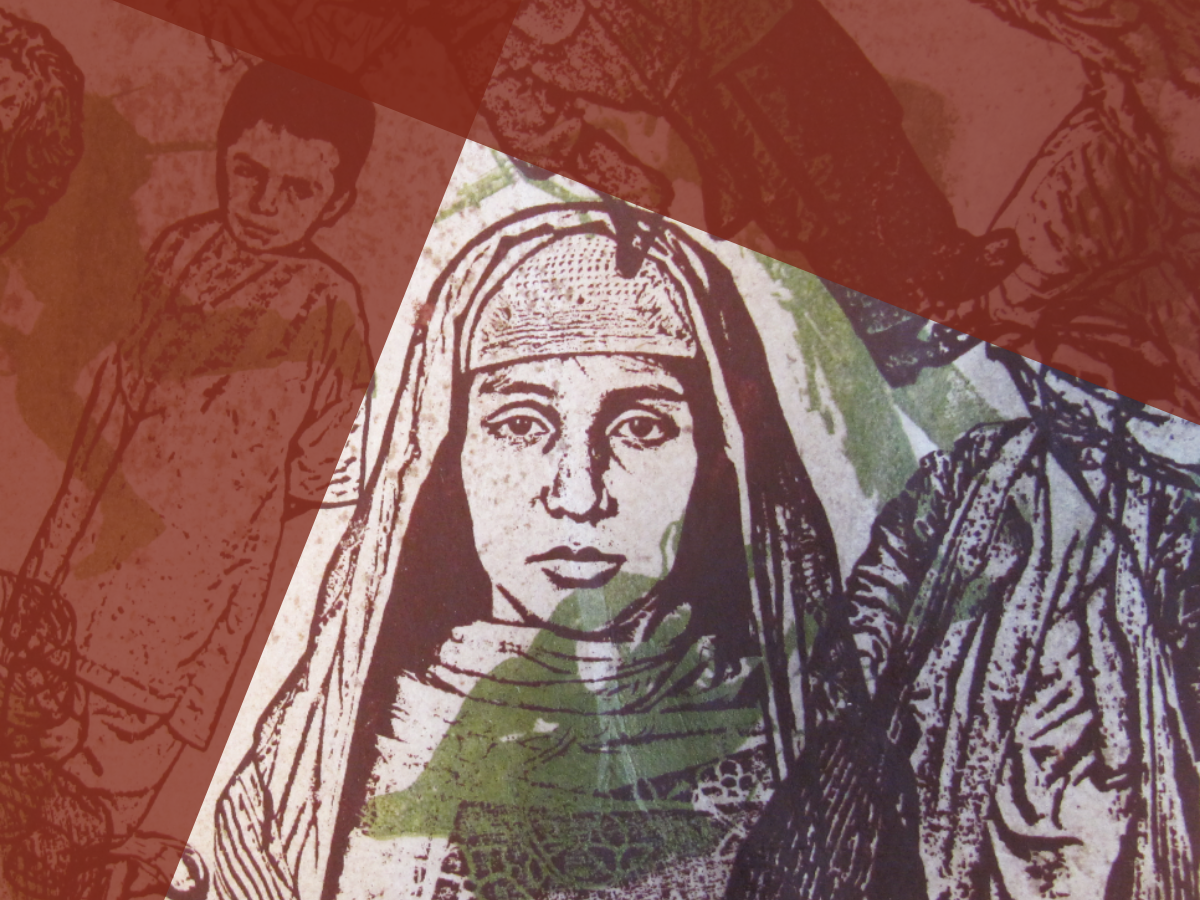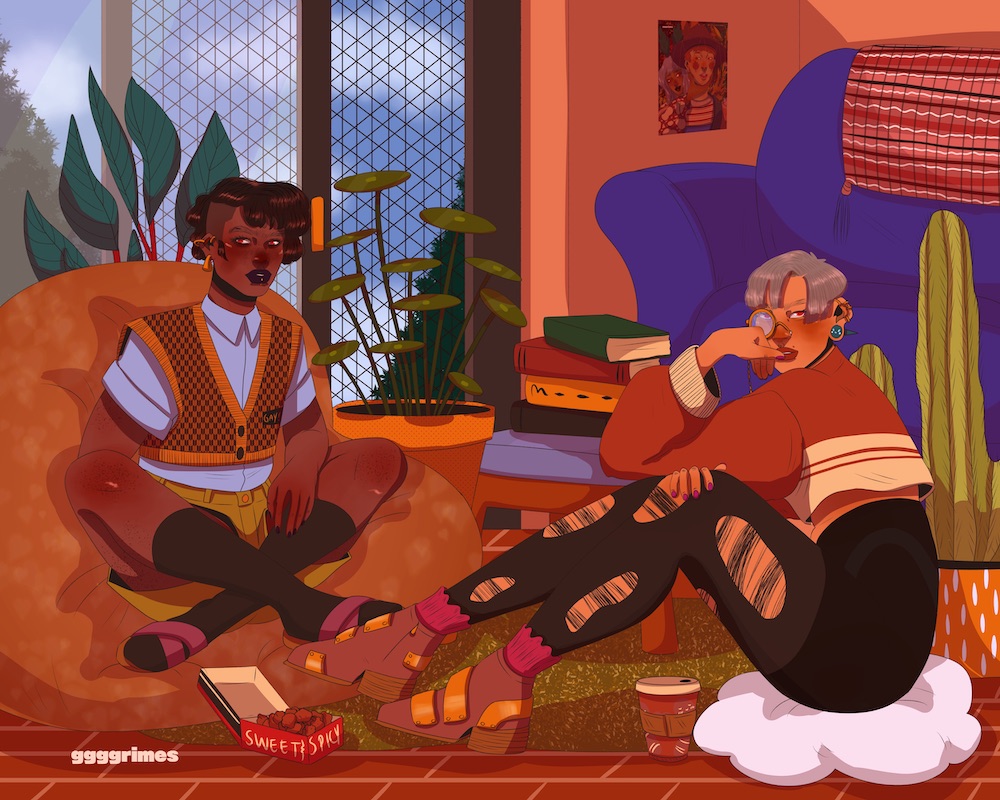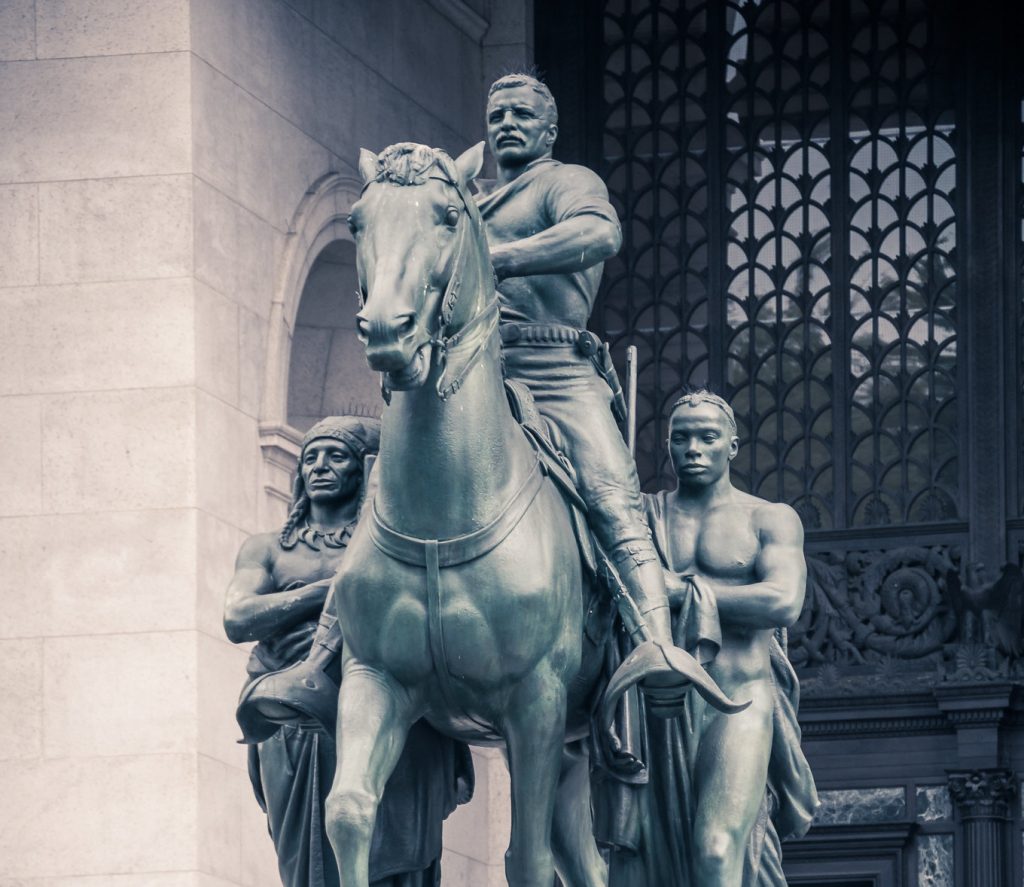What does it take to strengthen and sustain the solidarity built in responses to crises like 9/11?

October 4, 2021
Editors’ Note: In her introduction to the Fall 2011 issue of the Asian American Literary Review, coeditor Rajini Srikanth writes of how quickly we can forget our communities’ milestone moments of political awakening. Commemorating the 10th anniversary of September 11, that issue of AALR, edited by Srikanth and Parag Rajendra Khandhar, attempted to fill in the gaps of official acts of mourning. The testimony, dialogue, essays, and art brought alive the struggles and resistance of Muslim, SWANA, and South Asian communities in the days, months, and years after September 11.
We asked a number of contributors to the Fall 2011 issue of AALR to return to their writing and speak into the space of the past 10 years. The following essay by Deepa Iyer is part of that series within the Living in Echo notebook. You can read Deepa’s original piece from 2011 further down the page.
A lot can change in a decade. In 2010, I wrote an essay for the Asian American Literary Review’s special issue about the 10-year anniversary of September 11 that explored the fissures and possibilities of solidarity between Asian Americans and South Asian, Muslim, Sikh, and Arab communities who were targeted in the aftermath of 9/11. I ended my essay with this call to action:
Now, as we move past this first decade after 9/11, we have the opportunity to develop honest and meaningful alliances. If we seek to assert our collective power, we have no other option.
These words seem even more relevant from the vantage point of what has transpired over the second decade after 9/11: a regime of fear under the Trump administration that exerted its power through bans, walls, and raids; a global pandemic; increasing climate disasters; uprisings against anti-Black racism; an insurrection on Capitol Hill and growing political polarization; and anti-Asian racism. Equity and inclusion may be the buzzwords of the day but the reality is that communities of color are still facing high levels of disparity in terms of economic stability, educational access, health care, and more.
In 2021, alliance building is no longer a question of choice or an option to exercise. Instead, solidarity has become a necessity and an imperative for Asian Americans and all people of color in the United States. Whether or not we desire to build together, whether or not it’s natural, and whether or not it’s even really possible are rhetorical questions when considering the vantage point of the precarious times we are in right now. Solidarity is the way forward, a valuable strategy in the activist toolbox for building power and transforming systems of oppression and inequity.
Over the past decade, Asian American solidarity with South Asian, Muslim, and Arab communities has become stronger and more visible, especially as crises multiplied. For example, in the wake of Trump’s 2017 Muslim ban, the children of Minoru “Min” Yasui, Gordon Hirabayashi, and Fred Korematsu filed an amicus brief to challenge its constitutionality. They warned us that the Muslim ban reflected the racial animus and governmental overreach of World War II’s Executive Order 9066 that led to the incarceration of Japanese Americans. The National Queer Asian Pacific Islander Alliance made connections between the Muslim ban, the 1952 anti-LGBT travel ban, and Executive Order 9066 to show how government policies criminalize communities based on characteristics such as faith, race, and gender and sexual identity.
The past decade has also revealed the extent to which the security and surveillance state is using expanded powers obtained after 9/11 to target not only Muslim, Arab, and South Asian communities but also Black activists and immigrants. As a result, many organizations are working together to curtail and end the powers of state and federal law enforcement. In 2020, a wide coalition of organizations in the Bay Area including Asian Americans Advancing Justice-Asian Law Caucus, the Council on American-Islamic Relations, Secure Justice, and the Yemeni Alliance Committee worked together to successfully advocate for the termination of the Oakland Police Department’s partnership with the FBI’s Joint Terrorism Task Force that had led to surveillance and criminalization of communities of color.
At the national level, Asian American organizations are advocating against the Department of Justice’s China Initiative that investigates Chinese scientists and professors for espionage. The federal government relies on the far-reaching powers it obtained under national security laws and regulations established after 9/11 to implement the China Initiative. Asian American advocates claim that the China Initiative is tantamount to racial profiling and surveillance. It is clear that the government is reproducing and repackaging national security, immigration, and surveillance policies that targeted Muslim, South Asian, and Arab communities during the two decades after 9/11.
The recent rise in anti-Asian violence is part of the trajectory of hate violence that increased in the wake of 9/11. Scapegoating immigrant communities for problems facing Americans is not a new phenomenon. After 9/11, Muslims and those perceived to be Muslims were suspected of being terrorists and subjected to hate violence, airline profiling, employment discrimination, and immigration enforcement. Xenophobic and anti-Muslim rhetoric from elected officials only exacerbated that climate of fear. Today, East Asian communities are being targeted as the originators of the pandemic and Trump’s inflammatory rhetoric about the “China virus” only fanned the flames. In addressing COVID-19 anti-Asian racism, the National Asian American Leaders Table has regularly held learning sessions to better understand how Muslim, South Asian, and Sikh communities built rapid response infrastructure and changed public narratives, and developed Solidarity Stories to document and interrogate solidarity practices.
As we continue to deepen solidarity, certain principles can guide our practice and analysis, including:
*Centering the communities who are the most affected by unjust policies in ways that uplift their leadership, stories, and solutions for change.
*Identifying commonalities among the experiences that different communities have with oppression without comparing them, competing with each other, or flattening all struggles as though they are monolithic or equal
*Articulating clear analyses of how contemporary racism is rooted in deep histories of anti-Blackness and colonialism, especially in the U.S. context.
*Refraining from organizational and coalition dynamics of credit and control, whether that is in the context of raising funds, being spokespersons for affected communities, or playing a gatekeeper role.
With the virulent attacks on the livelihoods, bodies, and rights of communities of color that have occurred over the past decade and the creation of local and national organizing spaces to conspire together, Asian Americans are now more clearly grasping the reality of the far-reaching consequences of hate and state violence that occurred in the aftermath of 9/11. Even as we build spaces of solidarity, it’s true that the alliances between Asian and Muslim, Arab, and South Asian communities are shaky and uneasy at times. And many questions still linger: Do communities coming together in moments of crisis have shared values? In our urgency to build alliances, are the fissures and fault lines across Asian America being ignored or papered over? What does it take to strengthen and sustain the solidarity built in responses to crises like 9/11?
While we have a long way to go and these inquiries remain, the 20th anniversary of 9/11 reminds us that we do have the scaffolding to build upon and expand for the future. If we seek to assert our collective power amid the overlapping and complex crises before us, we have no other option.
The following short reflection by Deepa Iyer was originally published in the Fall 2011 issue of the Asian American Literary Review, dedicated to commemorating the 10th anniversary of September 11.
From “Forum | On the Desi America-Asian America Split and New Alignments Between South Asian, Arab, Middle Eastern, and Muslim Americans”
In 1998, Lavina Shankar and Rajini Srikanth edited a book that interrogated the question of whether South Asians are a part of, or apart from, Asian America. I remember reading that book with great interest. At the time, I was working at the National Asian Pacific American Legal Consortium (now the Asian American Justice Center), where I was one of few South Asian staff advocating on civil rights issues affecting the wide swath of Asian Pacific American communities. I remember confronting resistance and reservations from many South Asians who questioned whether the AAPI policy agenda actually included issues affecting South Asians. I felt strongly that it should, and was determined to include South Asian concerns institutionally and with broader coalitions.
But I was also acutely aware of the reality that the Asian American political construct did not appeal to many South Asians (who were struggling to even embrace a pan-South Asian construction of cultural and political identity), and that many AAPI organizations and coalitions only paid lip service when it came to including South Asians or our community’s issues in any meaningful sense. I attributed much of this to the lack of visibility and presence of strong South Asian organizations at local and national levels.
That is likely why I felt so strongly about the creation of the organization that would become South Asian Americans Leading Together (SAALT). Although SAALT was in very nascent stages when September 11, 2001, occurred, it soon became a vehicle through which community members could mobilize and advocate. Within hours and days after 9/11, when the stories of backlash began to reverberate around the country, it became clear that Sikhs, Muslims, South Asians, and Arab Americans would be targeted for backlash by both members of the general public and by the United States government. It also became evident that our communities had to be at the forefront of documenting and addressing discriminatory policies and actions, and of reminding Americans of our country’s fundamental principles. But our community’s national structure was limited, and local community-based organizations, especially those in New York City, were completely stretched due to the pressing needs following 9/11. In short, our community was in crisis mode with little infrastructure.
Community-building is always messy, and in times of crisis, even more so.
In the immediate aftermath of 9/11, the Asian American community came to our side. I remember a press conference within days of 9/11 at the Japanese American Memorial in Washington, D.C., which brought a diverse group of spokespersons together to speak out against injustice and intolerance. Many of the conversations that led to this press conference occurred in my apartment in Virginia, and I remember Asian American leaders and community members being part of the decision-making and mobilizing. Beyond D.C., Asian American organizations and leaders made public statements and stood with our communities—making connections between the World War II internment and the detentions and deportations of Muslim men; providing direct legal representation to those who were detained; publishing groundbreaking reports on the post-9/11 backlash; translating information for those subject to the special registration program, and more.
As time has gone on, many AAPI organizations that were highlighting post-9/11 impact have reduced that part of their work; and at the local level, the linkages between South Asians and the broader AAPI communities seem to still be disconnected. Often, South Asians are seen as the “9/11 community” with opinions only on issues related to post-9/11 policies. Sometimes, the post-9/11 related issues we need support from AAPI communities on are seen as too controversial. This is not limited to the APA community—funders, academic institutions, policymakers, and media see our communities through this lens, sometimes to the exclusion of all others.
Whether the 9/11 moment and its aftermath will be seen as a seminal moment for AAPIs is still cause for exploration. In spite of some important connections that have been made between AAPIs and South Asians, there is still disjointedness; somehow, the experiences of South Asians since 9/11 do not evoke a collective sense of “we have all been wronged” as other historical moments in Asian American history do.
Not surprisingly, South Asian communities are finding greater alignment with Arab Americans, Muslims, and Sikhs. We are bound together by a forced political construction (case in point: the Special Registration program implemented by the Department of Justice targeted those from the Middle East and South Asia); by shared experiences of discrimination and profiling, of being cast as the “other”; by the urgency of coalition-building across religious and racial lines (if we don’t do this together, how can we endure?); and by the grouping of our communities as MASA (Muslim, Arab, South Asian) by philanthropic institutions.
And as is the case with alliances that are catalyzed by crisis situations or institutional branding, there is often misunderstanding, political dynamics, uncertainty, distrust. But we have also endured. SAALT and the National Network on Arab American Communities have been learning from each other. Muslim and Sikh organizations regularly communicate and consult with each other. Those of us with national presence in D.C. come together to advocate with government agencies. We have learned to share information, to build partnerships, to leverage each other’s resources.
Yes, the road has been challenging since 9/11. But community-building is always messy, and in times of crisis, even more so. Now, as we move past this first decade after 9/11, we have the opportunity to develop honest and meaningful alliances. If we seek to assert our collective power, we have no other option.
A note about the art: The image that appears atop of this conversation is adapted from the artist Tomie Arai’s “The Shape of Me,” a silkscreen monoprint created in response to a national call to artists issued by the American Friends Service Committee for the 2011 exhibition entitled “Windows and Mirrors: Reflections on the War in Afghanistan.” We are grateful to collaborate with Tomie for our notebook Living in Echo. Find more of Tomie Arai’s work here.



